top of page
Exploration: Destination
Alternative model to the current “Education Program” in VGS to support youth in middle school in exploring and discovering their own strengths, motivations and interests, in relation to education and career choices.
Masters in Service Design - 2021 | Service Design 1 | 9 weeks
Clients - Catalysts & Designit
Arindita Dey with Synne Andresson
Under guidance by Joslna Vink, Alberto & Kaja Misvaer Kistorp

Our Service
Destination: Exploration helps identify a students' inner drivers and their connection to educational programs and activities. It further matches the students with Catalysts Mentor/Experts for guidance. (Drivers are a combination of passions, motivations, interests, experiences, skills and strengths).
How does our service work?
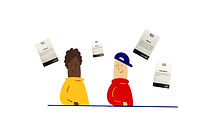
1
Peer-to-peer based exploration through the Catalysts strength cards.
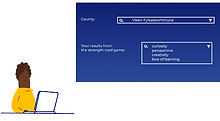
2
Destination: Exploration- This is where the user answers the questions connected to drivers, focused on introspection. The result is a guide to the higher education programs in Videregaende Skole and activities, based on their introspective work.

3
Connect with mentors through Catalysts’ mentoring program.
Challenges
Students are dropping out of upper secondary school, and have a low degree of self-confidence and self-efficacy.
Self-efficacy refers to an individual’s belief in his or her capacity to execute behaviours necessary to produce specific performance attainments. (Bandura, 1977, 1986, 1997)
Goals
We wanted to focus on building resilience, independent reflection and self-efficacy among the students in middle schools..
Therefore, our goal is to make students both feel more secure in their choice of upper secondary school and resilient to tackle the challenges that may present themselves in the coming years.
Some established thoughts
Before starting our research process. We read various articles and conversations about how the teachers are unhappy with the current school system. They always feel overworked.
The teachers we talk to in our interview also had some similar thoughts about this.
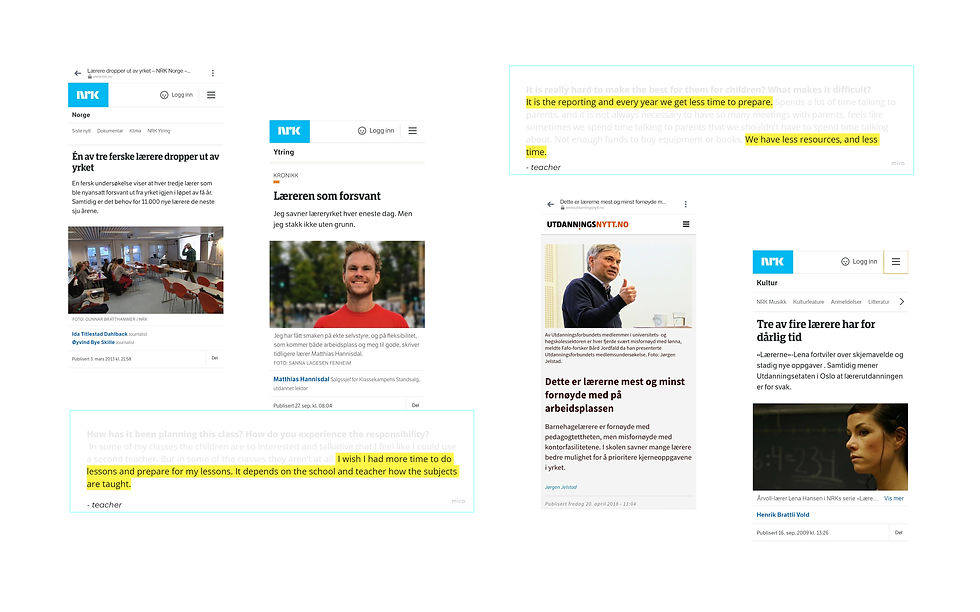
Research: Interviews
We interviewed several actors directly/indirectly involved in the education system like Students, Teachers, Advisors, Alumni, parents and some officials.
While speaking with them, we learned from their perspective about the education system, education program in school, their connection and personal experience with the system. Here we have highlight some of the insights which we felt were connected to a common theme, which is knowing themselves.

Co-design Workshop
The insights from the interview helped us frame our focus for the co-creation workshop. We wanted it to be fun & engaging. Also, we wanted to see and understand the students in the classroom environment and their dynamics.
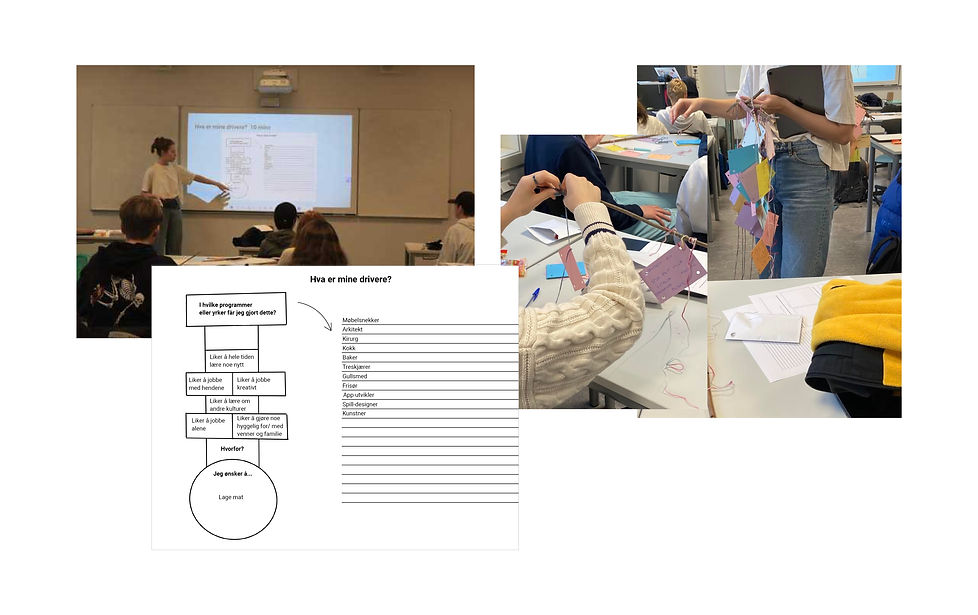
And making dream-catcher with list of goals they want to achieve in their future and their blockers to future themselves.
We used the childrens’ game hopscotch, or paradis in Norwegian, as a symbolic tool for the students to find their drivers.
Workshop Analysis
1. Among this group of students there are a lot of unrealistic expectations.
2. There is a need to work on their introspection.
Desktop Research - Vilbli.no

We took the quiz in Vilbli.no, we felt it is superficial, problematic and vague starting from the Tips.
1. It contradicts the purpose of education and job.
2. Word choice for the questions is very high level.
Concept Design
In the concept designing phase we met Eva Kosberg who is working on her PhD at Oslomet on How political self-efficacy could be increased in young students
.jpg)
We together explored Self-efficacy and its four drivers made by Albert Bandura and Vygotsky Proximal Learning zone. Combining both the models for our final design concept could help students find their inspirations and motivations and may help them decide for themselves about their career choice.

In the “now” zone, which is the current situation of the student in the middle school. Every decision of these students is made by someone older than them. And the last decision is taking the career path, which isn’t happening now.
A student can do with adult guidance or in collaboration with capable peers
What a student can do without assistance
We felt that the two theories Self-efficacy and Proximal Learning zone connects well with our “Know your drivers“ model. Therefore, we used “know your driver“ model as our inspiration in our final service design concept. We thought of designing an interactive model for the students, to give them a realisation about their drivers and the school, programs and activities they can explore to gain mastery.
Co-design the concept for service with Kristina and Jacob from Catalysts
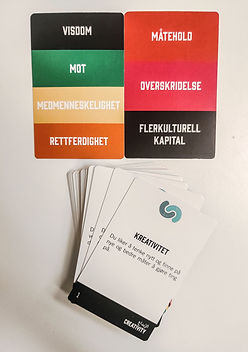

1. During our conversation we realised that we had to break Know your drivers model into smaller parts for more probing questions.
2.. t would be more useful for our service if we combine finding drivers with Catalysts strength cards.
3. We also discussed on how our service needs to be easy for teachers to use in their class.
Tension
1. Treating every student the same makes it difficult to discover their own strengths and drivers. It makes their relation to school so impersonal. They feel insecure and confused about choosing an upper secondary school program. It may limit their building of self-efficacy.
2. The explorative tools they are currently built are too superficial and barely scratches the surface of the students’ potential.
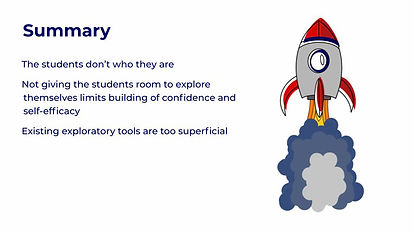
Introducing the service system
We thought of using Catalysts existing tools like strength cards & mentorship programme in our service design to guide the students .
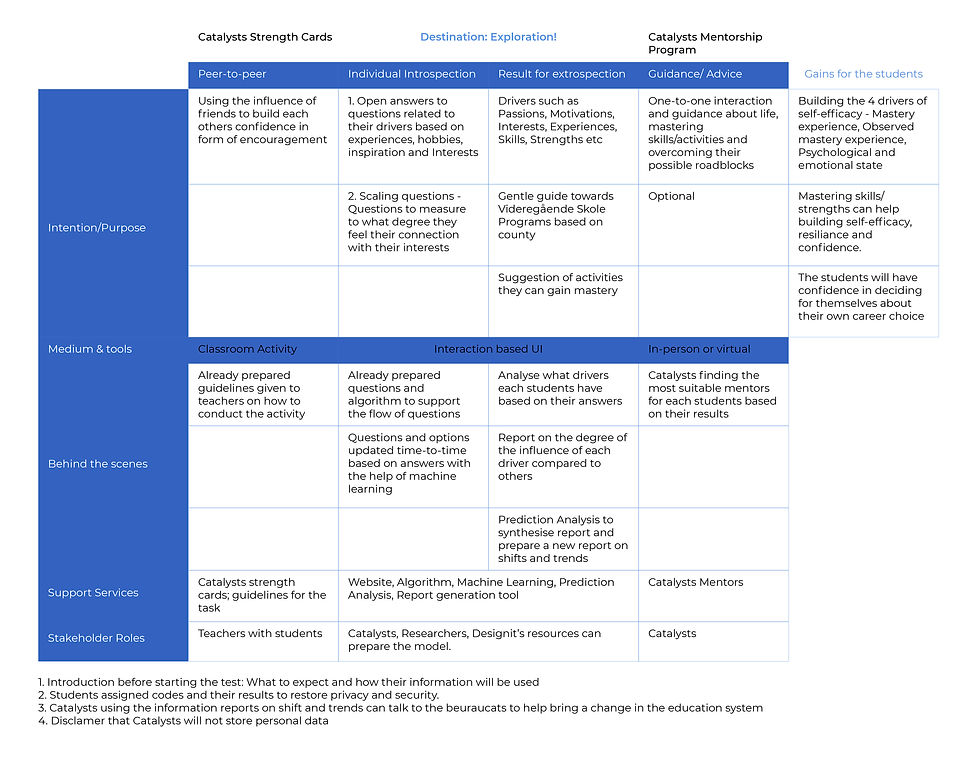
**User journey explained below in details

Individual Introspection
Result for extrospection
Service Design Blueprint
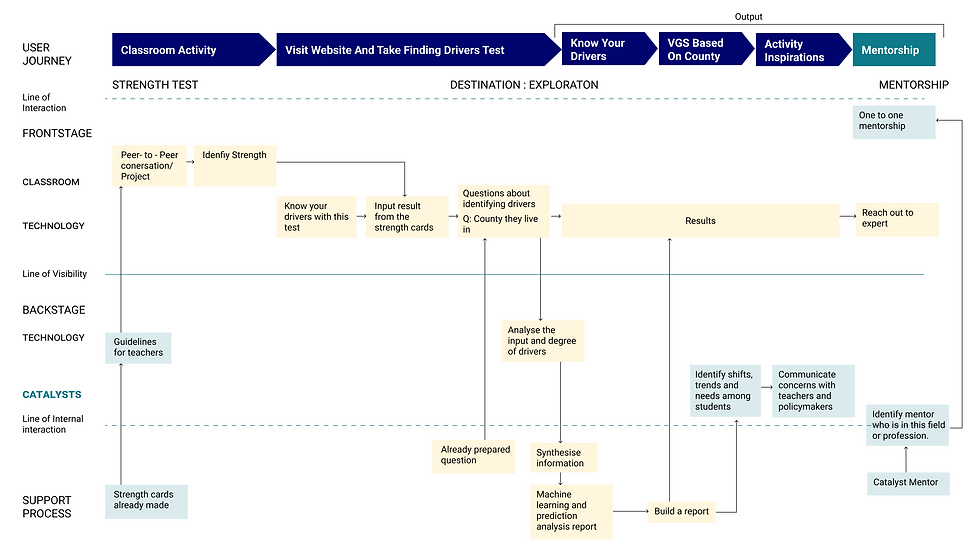.png)
Conclusion
Building resilience, confidence and self-efficacy will not only better prepare the students for the road of education and work down the line, but we believe this will also make them stronger, happier humans.
Future area to focus
We need to look into shaping our model to accommodate the special needs of students. Some examples like - Students who are blind, Students with language issues etc.
We also need to further investigate whether to highlight GPAs or not.
User Journey

bottom of page